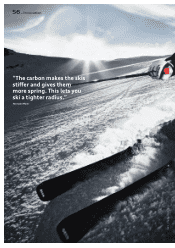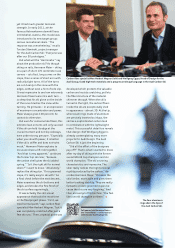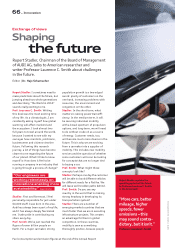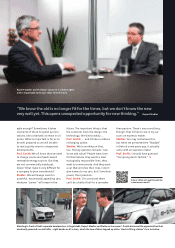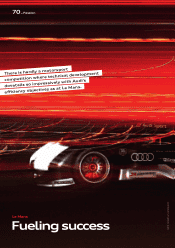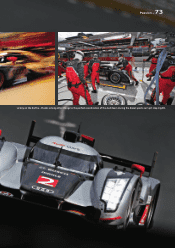Audi 2011 Annual Report Download - page 66
Download and view the complete annual report
Please find page 66 of the 2011 Audi annual report below. You can navigate through the pages in the report by either clicking on the pages listed below, or by using the keyword search tool below to find specific information within the annual report.
no headlights, pedestrians can be
seen crossing the highway and trucks
are notorious for driving along the
emergency lane on the wrong side of
the road. “It really is very diff erent
from Europe,” says racing driver Rinaldo
Capello, three-time winner of Le Mans,
Audi factory driver and participant in
the third stage of the Audi Q3 Trans
China Tour 2011. “It’s not as orderly
as on the road in Germany; it’s more
like Naples in my native Italy, or the
racetrack in Le Mans, where cars are
driving all over the place and trying to
pass each other.” The Q3 must be able
to handle any type of road surface, as
the tour follows fi eld tracks, gravel
roads and interurban roads full of
potholes, but also state-of-the-art
highways – and the world’s longest sea
bridge, the 42.5-kilometer Qingdao-
Haiwan bridge, which opened just
weeks before the tour began.
Without a doubt, the tour is a journey
through centuries of transportation
history. On the interurban roads, you
come across farmers bringing fresh hay
home on wooden carts. Water buff aloes
can be seen pulling plows across the
rice fi elds. Traders make their way to
the village market on donkey-drawn
wagons. Bicycles are everywhere to
be seen, mostly old pedal bikes in the
country, but more and more modern
electric bikes and mopeds in the cities.
Many things can be transported on two
wheels: Families of four crowd onto a
single seat, stowing shopping carts,
chicken cages and even pork sides on
the luggage rack. Although it’s cheap,
it’s not comfortable or safe. Thus it is
the dream of many Chinese people to
own a car. Shortly after the People’s
Republic was founded in 1949, Mao
Zedong built factories with Soviet help,
primarily to make cars, and also trucks.
Even today, outdated commercial
trucks are a common sight on China’s
interurban roads, but the trend is clearly
heading toward modernization. In this
respect, private Chinese customers
have long since arrived and are now
ahead of the curve, rather than trailing
behind. For years, Audi has been
the undisputed market leader in the
Chinese premium segment.
“The Audi brand owes its standing
largely to the fact that we have been
closely studying the way our customers
think and what they want for many
years,” explains Intakhab Khan. The
Indian native is a development engineer
at the Audi Infotainment Tec Center
(ITC) in China and is responsible for
adapting and improving the Audi Multi
Media Interface (MMI) for the Chinese
market. It is therefore now possible to
connect a number of diff erent Chinese
cell phones to the vehicle power
supply, in addition to televisions that
support the Chinese standard for
mobile video transmission. “China is
now setting its own standards, and
is thus on a level with Europe, North
America and Japan,” says Khan.
“In terms of technology, the People’s
Republic is developing at a rapid pace;
for us, this means we must develop
along with it, in order to give our
customers all the options they want
to have.”
Without all these new developments,
the Q3 drivers would almost certainly
encounter some diffi culties along their
Even today, outdated
Chinese-built commercial
trucks are a common
sight on the road.
Characters are entered on a touchpad –
almost as if with a paint brush.
“We study the way
our
customers think
and
what they want.”
Intakhab Khan, development
engineer at Audi
Innovation _ 63





